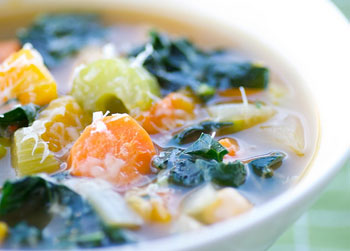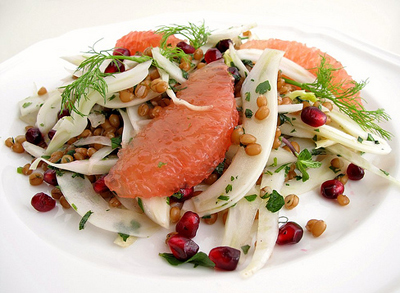 New Year's resolutions. They're nothing but bunkum.
New Year's resolutions. They're nothing but bunkum.
"Resolve to lose weight." It sounds real enough. It's a statement made in the dark of winter when we are most vulnerable. The holiday season romanced us with its twinkling lights, sparkling cocktails (can you say 400-calorie-martini?), and carb-heavy desserts. We indulge. We regret. Then on January 1st we commit to a diet.
By January 10th, most of us (read I) rummage through the pantry closet for something, anything chocolatey, salty, sweet, or preferably all three. We spot the bag of blue corn tortilla chips hidden behind the oatmeal and tell ourselves, "These are pretty healthy." We eat a few. Close the bag. Re-open it. Eat a few more. Next thing we know, half the bag is gone. Then we're thinking, "Well, hell, I already ruined my New Year's resolution. I might as well eat 'em all now."
If any diet worked, then why do magazines promote them on their covers every month, every year? Because they know that we are fallible and that living a life of extremes isn't attainable for most. Consider some of these weight loss claims from popular women's magazines: "Melt 10 LBS Fast!" "Shed One Size!In Just 2 Weeks!" "Shrink Your Belly!" And these are just the ones on my coffee table.
I say, "No." No to fast fixes, unrealistic goals, and tasteless foods. No to diets.

 Another workhorse of a vegetable, Butternut Squash is always on my shopping list and in my inventory during the fall and winter months.
Another workhorse of a vegetable, Butternut Squash is always on my shopping list and in my inventory during the fall and winter months. I am all about kabocha squash.
I am all about kabocha squash. If it wasn't for citrus fruit, winter's selection of produce would be pretty sad and boring. Once you've had your share of squashes and root vegetables, it's time for something different. Citrus offers a welcome respite. When markets begin to overflow with oranges, lemons, limes, and grapefruit, things finally get exciting. You may even see unusual citruses, such as blood oranges, tangelos, and pomelos. I love them all, but I particularly adore the sweet-tart flavor of grapefruits. This time of year, they replace my apple-a-day routine. But grapefruits aren't just for a dessert or snack, they shine in savory dishes, like this salad.
If it wasn't for citrus fruit, winter's selection of produce would be pretty sad and boring. Once you've had your share of squashes and root vegetables, it's time for something different. Citrus offers a welcome respite. When markets begin to overflow with oranges, lemons, limes, and grapefruit, things finally get exciting. You may even see unusual citruses, such as blood oranges, tangelos, and pomelos. I love them all, but I particularly adore the sweet-tart flavor of grapefruits. This time of year, they replace my apple-a-day routine. But grapefruits aren't just for a dessert or snack, they shine in savory dishes, like this salad. Since I require bright color to keep me happy, I make up for the weather with vegetables. One of my favorite color combos is deep green and bright orange. This week at the grocery I spotted big bunches of leafy Tuscan kale right across the aisle from a bin of blood oranges, and thought bingo! What a great combo—a truly colorful wintry mix.
Since I require bright color to keep me happy, I make up for the weather with vegetables. One of my favorite color combos is deep green and bright orange. This week at the grocery I spotted big bunches of leafy Tuscan kale right across the aisle from a bin of blood oranges, and thought bingo! What a great combo—a truly colorful wintry mix.
